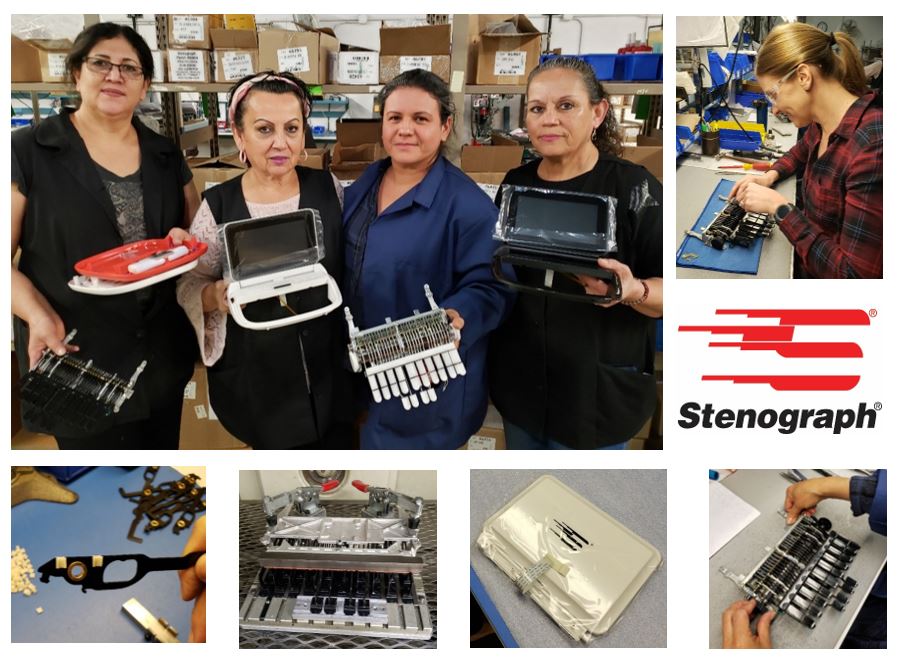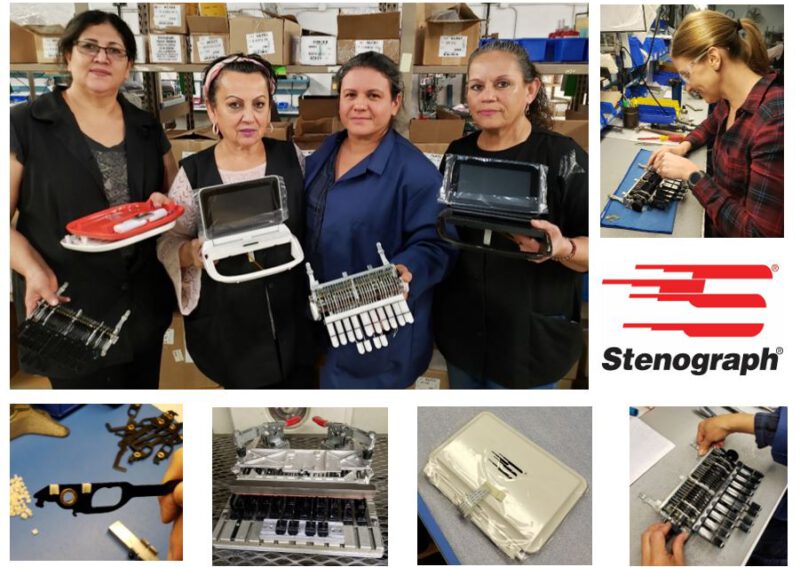
I have always enjoyed learning how items are manufactured. It started with me watching Mr. Rogers visit the Crayola crayon factory. I was fascinated by seeing the process of liquid wax molded into crayons and then wrapped with paper labels. Since then, as part of my work for manufacturing companies, I have had opportunities to watch many other products being produced. One thing I’ve learned: when you first look at a product, you don’t realize the amount of work that goes into creating it.
I recently had the opportunity to work with the Stenograph assembly department and learn how a Luminex II writer is built. I knew a lot of work went into every writer we produce, but I didn’t realize exactly how many processes and how much detail goes into each and every one until I spent a day with the assembly team. Quality was one word that they repeated numerous times while I worked with them. It quickly became clear to me that every member of the team takes their jobs very seriously and they want our customers to have the best quality writers. Every step I did in the assembly process was reviewed and double-checked by the team to make sure it met their high-quality standards.
My day started with me working on the keyboards with Irma. She showed me how we use different, specifically selected lubricants to ensure the key levers, grommets in the comb slots and the springs are functioning properly. Irma then taught me how to add the adjustment bar and how the springs are attached to each key lever.
Next, I worked with Eva and had the opportunity to learn how to set the proper key levers into the fixture and then place the key tops for the various keyboard configurations. Eva made the epoxy that is used to attach the key tops to the key levers and we carefully added epoxy to each key. This required great attention to detail as the amount used had to be just right. Once that was done, we carefully lined up and inserted the key levers into the key tops and then placed the fixture in the oven to cure.
The next person I worked with was Sandy. She taught me the processes that she does, which include adding the magnets to each key lever and assembling the housing. The housing assembly is very important as that involves adding the status LCD and the main LCD screen to the unit.
My time with the assembly team ended with me sitting with Macaria and learning about the manual adjustments and checks she has to do with the finished keyboard assembly. Multiple steps and checks are done to make sure everything is lined up, functioning properly, and that it meets our high-quality standards. It was impressive to watch Macaria touch and feel the keys to know exactly what needed adjustment.
There are many other processes that are part of building a Luminex II writer that I did not have a chance to experience during my writer building day. I learned a lot from the team, and it gave me a profound understanding and respect for the work they do.
I feel honored to have such amazing coworkers that take pride in their work and are dedicated to producing top-quality products. Stenograph is very lucky and thankful to have such a dedicated assembly team that pays attention to EVERY detail.
“Quality means doing it right when no one is looking.” -Henry Ford

